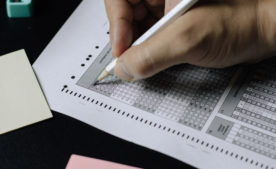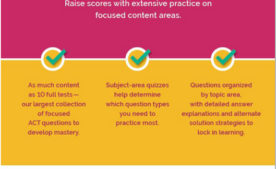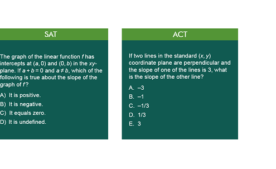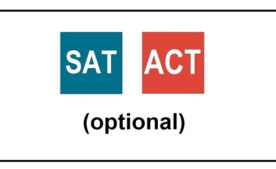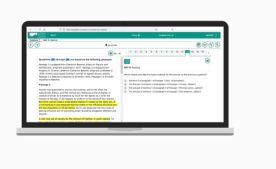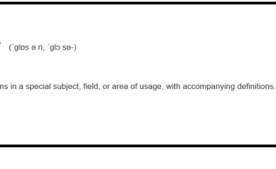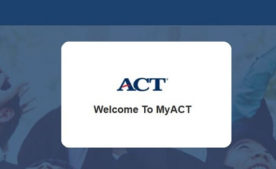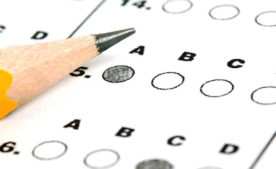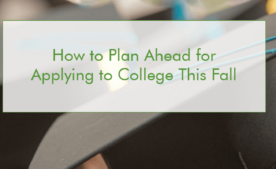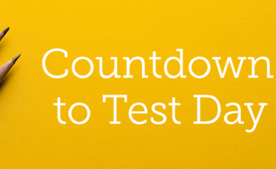A Good Test Prep Plan is Customized for the Student
We have always counseled students and parents to maintain perspective and to craft a sensible, individualized testing plan early in the process — a plan that addresses which tests to take, when to take them, and how and when to prepare for them.
There is no single best testing plan, but there is a plan that will work best for your specific needs. One that puts the student’s well-being front and center, prioritizes school work, and doesn’t give the tests more life than they deserve. The following is our guide to creating a college test preparation plan that works for you.
[STEP 1] Choose WHICH Tests You’re Going to Take
SAT or ACT?
Colleges will accept either and view both equally, so which test to pursue is up to you. We recommend that you choose SAT or ACT early in the process and prepare for that test.
- Take a practice SAT and a practice ACT in the summer before junior year to determine your preference. Use only official practice tests from ACT and the College Board (SAT), and take them under timed, simulated conditions.
- Compare your scores on the practice tests using official concordance data. Only 20-30% of students will show a significant difference between their SAT and ACT scores. The majority of students will score roughly the same on both tests. For these students, the decision usually comes down to which test feels more comfortable.
- Choose either the SAT or the ACT, then commit to preparing for that test. Don’t “ping-pong” between them, and don’t prepare for both at the same time. You likely don’t have the time nor will it be productive.
The SAT – ACT decision is not necessarily final. If later in your testing process, you feel you’ve peaked on one particular test, you can always switch to the other. Read more on this topic.
NOTE: A large number of colleges and universities adopted test-optional admission policies in response to the COVID-19 pandemic. In spite of this, many applicants still submitted test scores. Keeping in mind that test-optional does not mean test-blind, we recommend that most, if not all, juniors should keep standardized tests on their radar and plan to submit SAT or ACT scores as part of their applications.
[STEP 2] Decide WHEN to take the tests
Many factors might influence when you decide to take your tests: academic readiness, your school and extracurricular schedule, and your availability to prepare for the tests. Here are some things to consider:
CONSIDERATIONS FOR “WHEN” TO TAKE THE SAT, ACT
- Statistically, students score best late in junior year and fall of senior year. We generally dissuade students from starting testing too early. Aside from the cost and time involved, most students aren’t academically ready early in junior year and therefore risk having their confidence rattled. Like all general recommendations, there are a few exceptions, which are outlined in bullet 4 of this list.
- We recommend taking the test twice in the latter half of junior year, usually between December and June. The experience of the first test will build confidence for the second. Moreover, knowing you have a second chance alleviates some of the pressure from the first sitting.
- Assume a third test in the summer before senior year or fall of senior year. Ideally, you’ll be finished after junior year, but students will often test again in the summer before senior year or the fall of senior year. Remember, the further along in age and school, the better students do.
- Some students MIGHT or SHOULD consider testing earlier in junior year. High-scoring juniors (1400+, 31+) might consider testing in the fall. Recruited athletes might have to show scores to college coaches early in junior year or even late in sophomore year. Lastly, juniors doing a spring semester abroad might consider testing right before they leave and then again in summer/fall of senior year.
[STEP 3] Decide HOW and WHEN to prepare for the tests
Whether you prepare with one-on-one tutoring, classroom programs, or independent study, test prep programs can be found to accommodate any need. Cost, scheduling flexibility, and level of motivation are some of the factors to consider when deciding how to prepare.
Preparing for the SAT and ACT
- Typical preparation begins 6-15 weeks before the test and leads up to the exam. Your preparation should target a particular test date, ideally your first official test. The preparation you do for that first exam will carry over to any subsequent exams.
- Don’t prepare for both the SAT and ACT simultaneously. If you do end up taking both tests, your preparation for one test will give you a good head start on the other test.
- Practice tests are a core part of preparation. Good preparation consists of shoring up knowledge, learning test-taking strategy, and taking full-length, timed practice tests. Much like a scrimmage or a dress rehearsal, taking practice tests under real conditions builds familiarity and confidence.
We strongly recommend that students take 2-4 proctored practice tests during the course of a test prep program




